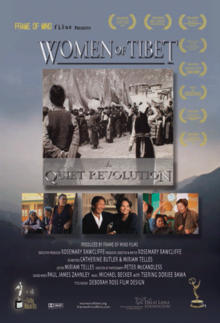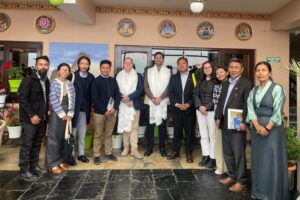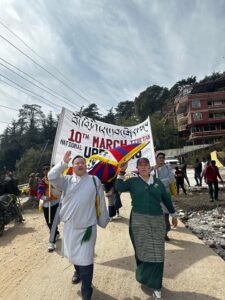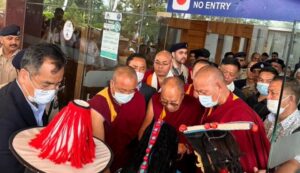Women of Tibet Film Trilogy Wins Emmy

May 16th 2009: The second installment of the Women of Tibet film trilogy, directed by Rosemary Rawcliffe, was today awarded an Emmy for best Historical/Cultural Programme/Special. The Women of Tibet trilogy is made up of three, hour-long, documentary style films. The films are described by Rawcliffe as together displaying the ‘three faces of the Great Mother’. Rawcliffe describes the first film in the trilogy (The Great Mother) as the portraying the model of the Great Mother, the second (A Quiet Revolution) as portraying the activity and the essence of the archetypal Great Mother, and the third (The Buddha’s Wife) as portraying the divine face of the Great Mother.
The Great Mother
The Great Mother is the first film in the trilogy; it features His Holiness the 14th Dalai Lama, along with Dr Marion Woodman, Alice Walker and Angeles Arrien. They explore the incredible life and courage of Dekyi Tsering (mother to His Holiness the 14th Dalai Lama) in relation to perceptions of the archetypal Great Mother. They go on to discuss the importance of the Great Mother archetype and the profound influence which it has upon humanity today. During the film His Holiness the Dalai Lama states that ‘[a mother] is the most important part of building a healthy family, and that means a healthy humanity’.
A Quiet Revolution
The second film in the trilogy, a quiet revolution tells the story of the thousands of brave Tibetan women who gathered in peaceful protest in Lhasa square, on March 12th 1959, to create what we now know as Women’s Uprising Day. A Quiet Revolution features three generations of Tibetan women recounting the events of that day and paying tribute to the fifteen thousand Tibetan women who were exiled and/or jailed as a direct result of their involvement in the protest. During the film Ama Adhe Tapontsang speaks about how her strong faith helped her cope during the 28 years she spent in prison following her involvement in Women’s Uprising Day, and of her work educating new generations of young Tibetan refugees. Dolma Tsering Teykhang speaks of the sacrifices her parents made in order for her to have the opportunity to become a teacher, and later a member of the Tibetan government in exile, and Tseten Choeden Schneiter speaks of her experience of being born and raised in exile, and of her efforts to educate her children about Tibetan culture. His Holiness the Dalai Lama also features in the film, where he pays tribute to the Tibetan women who have suffered and fought in an effort to preserve Tibetan culture and the rights of the Tibetan people.
The Buddha’s Wife
The third and final film in the trilogy, the Buddha’s Wife examines the traditional roles of men and women in society and how these roles have and have not changed in modern times. The film uses the story of the Buddha and the Buddha’s wife to portray the changes undergone by both men and women as they become fully realised human beings. The Buddha and his wife represent the sacred marriage and how the two great forces; the divine masculine and the divine feminine, affect the lives of both men and women today. During the film His Holiness the Dalai Lama expresses the importance of these two forces in our lives and states that one is strongest when the two forces are balanced within us. The film then goes on to explore how sacred marriages can be found all around us if we only know where to look.




